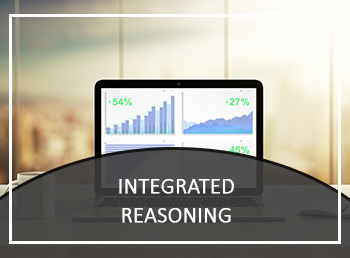
Product Format: Print Product
Valid - Guaranteed
The Integrated Reasoning section of the GMAT exam tests how good are you in integrating data to solve intricate problems. This is important to validate your skills to absorb large data and come up with the perfect solution. With integrated rezoning section you will be able to demonstrate your skills to:
In this section you will need to solve the total 12 questions of four different types, most of them might even require multiple responses. This section is supposed to be completed in 30 minutes.
There are four types of questions in the Integrated Reasoning Section:
The questions include both quantitative and verbal reasoning, either separately or in combination.
There are two distinctive features of this section:
On an important note, remember that these questions are intended to test your skills to integrate data and solve intricate problems so there is no partial credit, therefore, you are required to answer all responses to questions correctly.
These questions test the candidate to assess data from different sources (text passages, tables, graphics, or a blend of the three) and to study each source warily and answer multiple questions. Some of them might need you to spot inconsistencies among different sources of data. Others might ask you to draw conclusions or may require you to determine whether data is relevant or not.
Tests your skills of sorting and analyzing a data table, just like a spreadsheet, to help you decide which parts of the information are relevant and come across the demand evenly.
Tests your skills to understand the information existing in a graph or other graphical image (scatter plot, x/y graph, bar chart, pie chart, or statistical curve distribution) to separate relations and create conclusions.
Tests your skills to solve intricate problems whether they are quantitative, verbal, or a mixture of both. The format contains a wide range of content to test your credibility in evaluating trade-offs, solve simultaneous equations, and discriminate relationships between two entities.